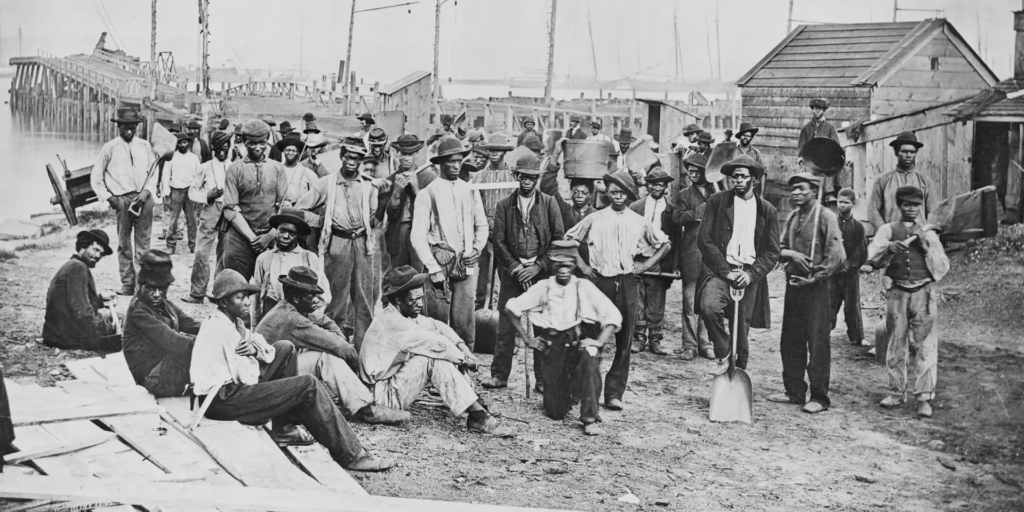
Located in the historic Five Points neighborhood, Denver Fire Department Station 3 was built and opened in 1931, making it the oldest Denver firehouse; it is also the smallest. The architect, C. Francis Pillsbury, designed the firehouse like a home in Spanish bungalow style. Pillsbury, who designed three other Denver fire stations and the State Capitol Annex Building‚ was a member of the City and County Building architectural team. (Denver Landmark Designation Application, page 2). The estimated cost of Station 3 was $10,000 (page 5). In 1994, the Denver Landmark Preservation Commission designated this building as historic landmark no. 235.
Fire Company 3 was established March 16, 1882, and originally located at 2600 Curtis. In 1885 Firehouse #3 moved to 2563 Lincoln (Glenarm Place). This building still stands across from the present-day Firehouse #3 and is privately owned.
After meeting with community leaders and businessmen who helped carry state-wide election, the City of Denver hired DFD’s first African American firefighters on March 13, 1892. In 1893, the Denver Fire Department had founded a completely new crew comprised of African American firefighters. The team was stationed at Station 3 with a white officer until August of 1897, when Lieutenant Silas Johnson was promoted to Captain and Driver McGruder was promoted to Lieutenant.
These historic promotions occurred while Station 3 and the DFD were mourning the deaths of the entire Engine 3 crew who died in the line of duty when a floor collapsed into the basement at the infamous St. James Hotel Fire of March 23, 1895. Decades later, on July 17th, 1938, Engine 3 was covering into Station 5’s area for an emergency call. They collided with Truck 4 who was responding to the Elitch’s fire, killing Captain George Brooks and Firefighter James Simspon.


13th Amendment
The 13th Amendment to the U.S. Constitution, ratified in 1865 in the aftermath of the Civil War, abolished slavery in the United States. The 13th Amendment states: “Neither slavery nor involuntary servitude, except as a punishment for crime whereof the party shall have been duly convicted, shall exist within the United States, or any place subject to their jurisdiction.”


Founding Fathers and Slavery
Despite the long history of slavery in the British colonies in North America, and the continued existence of slavery in America until 1865, the amendment was the first explicit mention of the institution of slavery in the U.S. Constitution.
While America’s founding fathers enshrined the importance of liberty and equality in the nation’s founding documents—including the Declaration of Independence and the Constitution—they conspicuously failed to mention slavery, which was legal in all 13 colonies in 1776.
Many of the founders themselves owned enslaved workers, and though they acknowledged that slavery was morally wrong, they effectively pushed the question of how to eradicate it to future generations of Americans.
Thomas Jefferson, who left a particularly complex legacy regarding slavery, signed a law banning the importation of enslaved people from Africa in 1807. Still, the institution became ever more entrenched in American society and economy—particularly in the South.
By 1861, when the Civil War broke out, more than 4 million people (nearly all of them of African descent) were enslaved in 15 southern and border states.
Denver Fire Department Station 3
CHIEF No. 3

Fire Station 3 was located at 2563 Glenarm Place. This building is located kitty-corner from the current Station 3 (now known as Glenarm Place). In 1888 a new Silsby Steam Engine was placed in service and was known as Steamer Company 3. Steamer Company 3 remained in service until March 13, 1892, when the Denver Fire Department founded its first and only company with all black firefighters.

(District 2) Station 3 is located at 2500 N. Washington St. Station 3 has been in service since 1931, the only single bay house in the Denver Fire Department, and currently the oldest and smallest active Denver fire station. Station 3 was the first and only fire station in Denver to be staffed by all African American firefighters until the Department desegregated in 1958. Station 3 serves the Five Points and Curtis Park Neighborhoods.
Until this time the Denver Fire Department only employed black firefighters as drivers for the chief officers. In 1921 Company 3 received its first motorized apparatus. The company was eventually known as a hose company, wagon company & engine company and in 1931 moved to the current quarters at 2500 Washington St.
Raiders hiring Antonio Pierce as full-time head coach

14th Amendment
The 14th Amendment to the U.S. Constitution, ratified in 1868, granted citizenship to all persons born or naturalized in the United States—including formerly enslaved people—and guaranteed all citizens “equal protection of the laws.” One of three amendments passed during the Reconstruction era to abolish slavery and establish civil and legal rights for Black Americans, it became the basis for many landmark Supreme Court decisions over the years. In its later sections, the 14th Amendment authorized the federal government to punish states that violated or abridged their citizens’ right to vote by proportionally reducing the states’ representation in Congress and mandated that anyone who “engaged in insurrection” against the United States could not hold civil, military or elected office (without the approval of two-thirds of the House and Senate.
14th Amendment
SPORTS TALK ENT 1


Trump asks US Supreme Court to keep him on ballot in 14th Amendment case
14th Amendment
It also upheld the national debt but exempted federal and state governments from paying any debts incurred by the former Confederate states. Reconstruction Abraham Lincoln’s assassination in April 1865 left his successor, President Andrew Johnson, to preside over the complex process of incorporating former Confederate states back into the Union after the Civil War and establishing former enslaved people as free and equal citizens. Johnson, a Democrat (and former slaveholder) from Tennessee, supported emancipation, but he differed greatly from the Republican-controlled Congress in his view of how Reconstruction should proceed. Johnson showed relative leniency toward the former Confederate states as they were reintroduced into the Union. But many northerners were outraged when the newly elected southern state legislatures—largely dominated by former Confederate leaders—enacted black codes, which were repressive laws that strictly regulated the behavior of Black citizens and effectively kept them dependent on white planters. Civil Rights Act of 1866 In creating the Civil Rights Act of 1866, Congress was using the authority given it to enforce the newly ratified 13th Amendment, which abolished slavery, and protect the rights of Black Americans.

Johnson vetoed the bill, and though Congress successfully overrode his veto and made it into law in April 1866—the first time in history that Congress overrode a presidential veto of a major bill—even some Republicans thought another amendment was necessary to provide firm constitutional grounds for the new legislation. Thaddeus Stevens In late April, Representative Thaddeus Stevens introduced a plan that combined several different legislative proposals (civil rights for Black people, how to apportion representatives in Congress, punitive measures against the former Confederate States of America and repudiation of Confederate war debt), into a single constitutional amendment. After the House and Senate both voted on the amendment by June 1866, it was submitted to the states for ratification. President Johnson made clear his opposition to the 14th Amendment as it made its way through the ratification process, but Congressional elections in late 1866 gave Republicans veto-proof majorities in both the House and Senate. Southern states also resisted, but Congress required them to ratify the 13th and 14th Amendments as a condition of regaining representation in Congress, and the ongoing presence of the Union Army in the former Confederate states ensured their compliance. On July 9, 1868, Louisiana and South Carolina voted to ratify the 14th Amendment, making up the necessary three-fourths majority.



 Sofia Llamas: A Force for Good in Colorado – Igniting Hope and Empowering Communities
Sofia Llamas: A Force for Good in Colorado – Igniting Hope and Empowering Communities  Yella Beezy Released on $750,000 Bond
Yella Beezy Released on $750,000 Bond  Global Don Breaking The Silence
Global Don Breaking The Silence  Was it really about the Lil Wayne Concert
Was it really about the Lil Wayne Concert  South Florida residents told to steer clear of ‘life-threatening’ flooding
South Florida residents told to steer clear of ‘life-threatening’ flooding  Camping 4 Beginners
Camping 4 Beginners  Trump administration offers to pay plane tickets, give stipend to self-deporting immigrants
Trump administration offers to pay plane tickets, give stipend to self-deporting immigrants  The Force Awakens: Aiden Anderson’s Rise in Dallas Amateur Boxing
The Force Awakens: Aiden Anderson’s Rise in Dallas Amateur Boxing  Thomas Edward Patrick Brady Jr, Shedeur Sanders, Travis Hunter, Shilo Sanders, Jimmy Horn Jr, Global Don, and more
Thomas Edward Patrick Brady Jr, Shedeur Sanders, Travis Hunter, Shilo Sanders, Jimmy Horn Jr, Global Don, and more